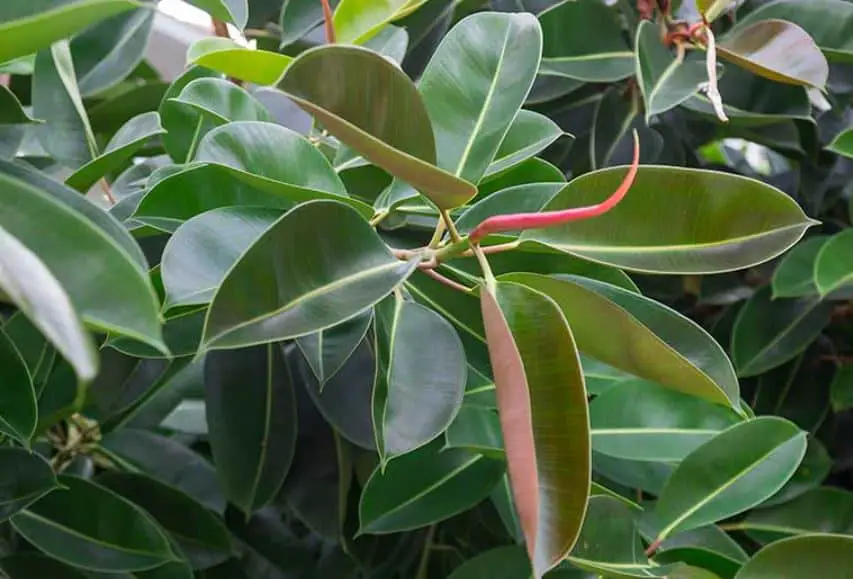Ficus elastica, a plant with impressively large, glossy leaves, can only live outside in very hot conditions due to its sensitivity to cold. It is often cultivated inside as a result. While robust rubber tree plants are often pest-resistant, they are susceptible to infestation by various sap-sucking parasites. What should you do if you see insects on rubber plants? For useful hints, keep reading.

A Rubber Plant’s Pests
The most typical insects that may be seen on rubber plants are listed below:
Little, oblong bugs known as aphids congregate in large numbers on the undersides of leaves or at the junctions of leaves and stems. While various species may be red, brown, black, or yellow, pests are often green. By stealing the delicious nectar from the leaves, aphids harm rubber plants.
Like aphids, scales are little plant pests that cling to every part of the rubber plant and eat the delicious plant fluids. Pest scales might be soft with a waxy or cottony surface or armored scales with a plate-like outer coating.
Spider mites are severe rubber plant pests that pierce leaves to extract nectar but are difficult to spot with the naked eye. You can identify mites on the plant by looking at their distinctive webs. They often show up in dry, dusty circumstances.
Thrips are small, wingless insects found on rubber plants. When disturbed, the insects, which might be black or straw-colored, often leap or fly. While they may also infest plants cultivated inside, thrips are more problematic for rubber tree plants planted outside.
What to Do If a Rubber Plant Has Pests
Rubber plant bugs may often be controlled using insecticidal soap sprays, but you might need to reapply the solution every few weeks until the problem is resolved. Since DIY sprays are often too strong for indoor plants, use a commercial product. Another option is neem oil.
Horticultural oils are particularly effective against pests that are difficult to control on rubber plants, such as scale and thrips, by suffocating them to death. Since certain indoor plants are sensitive to oils, carefully read the label. Before applying, cover the furnishings.
Only in extreme cases may chemical pesticides be used. If you utilize chemicals, make sure they have an indoor use registration.


